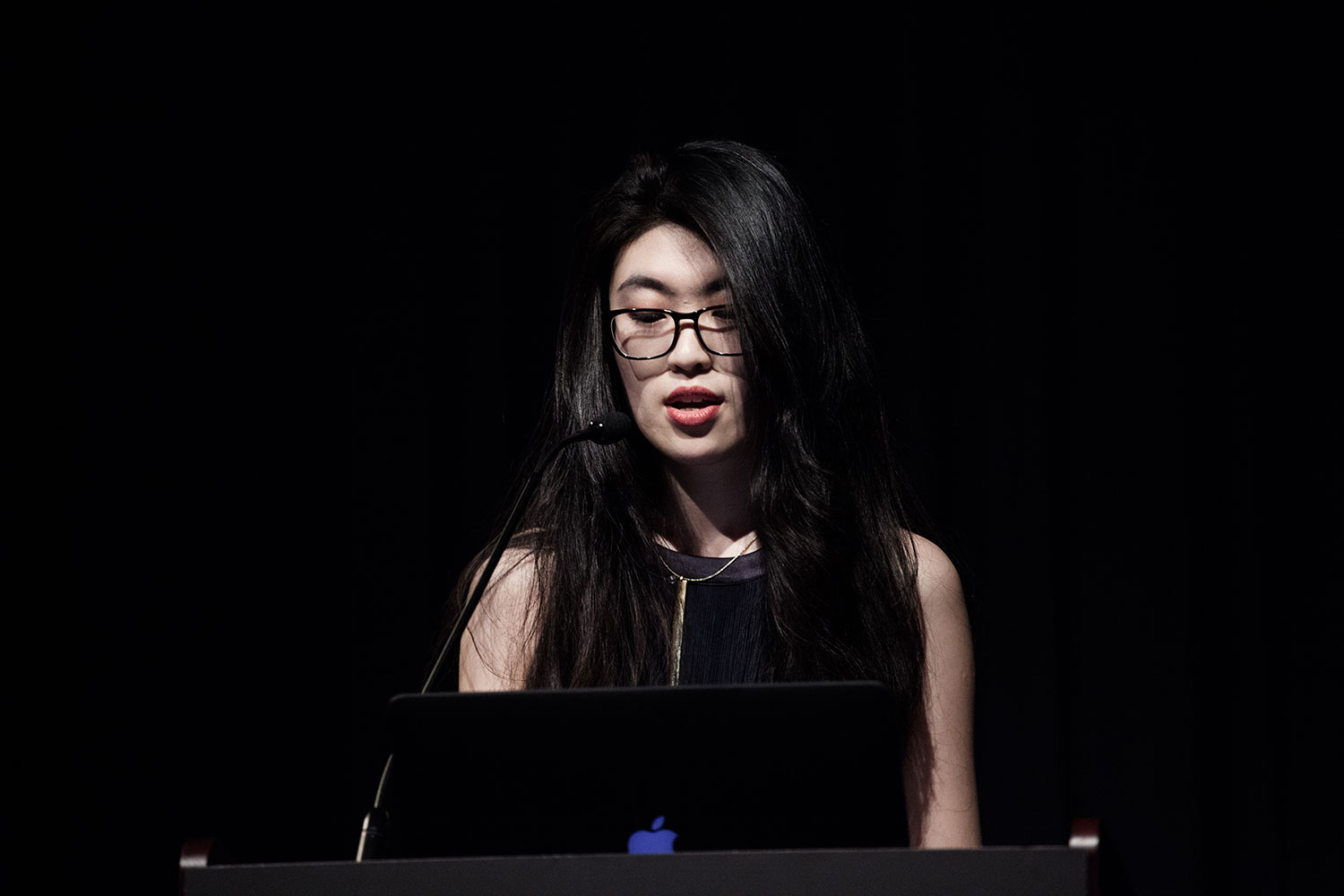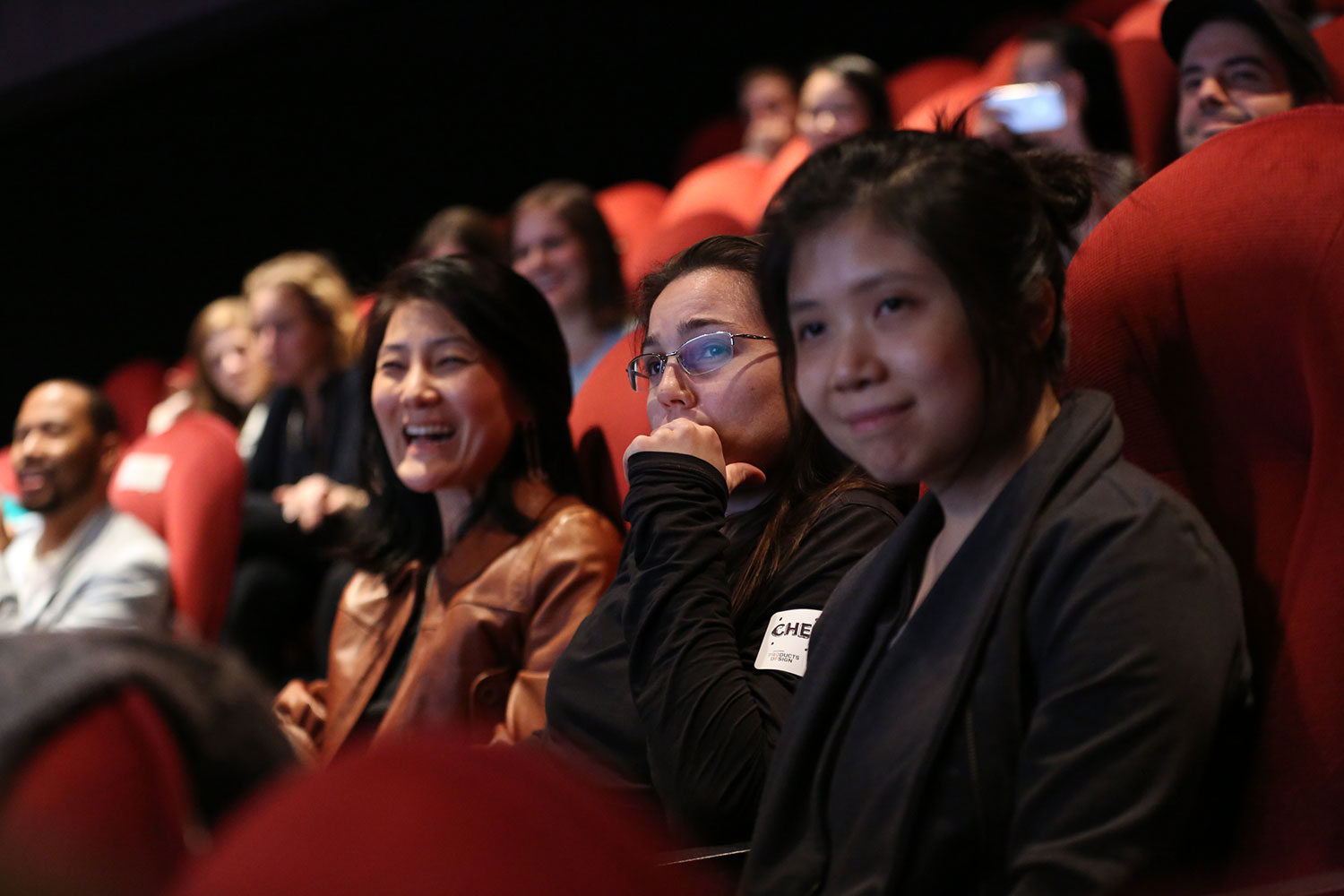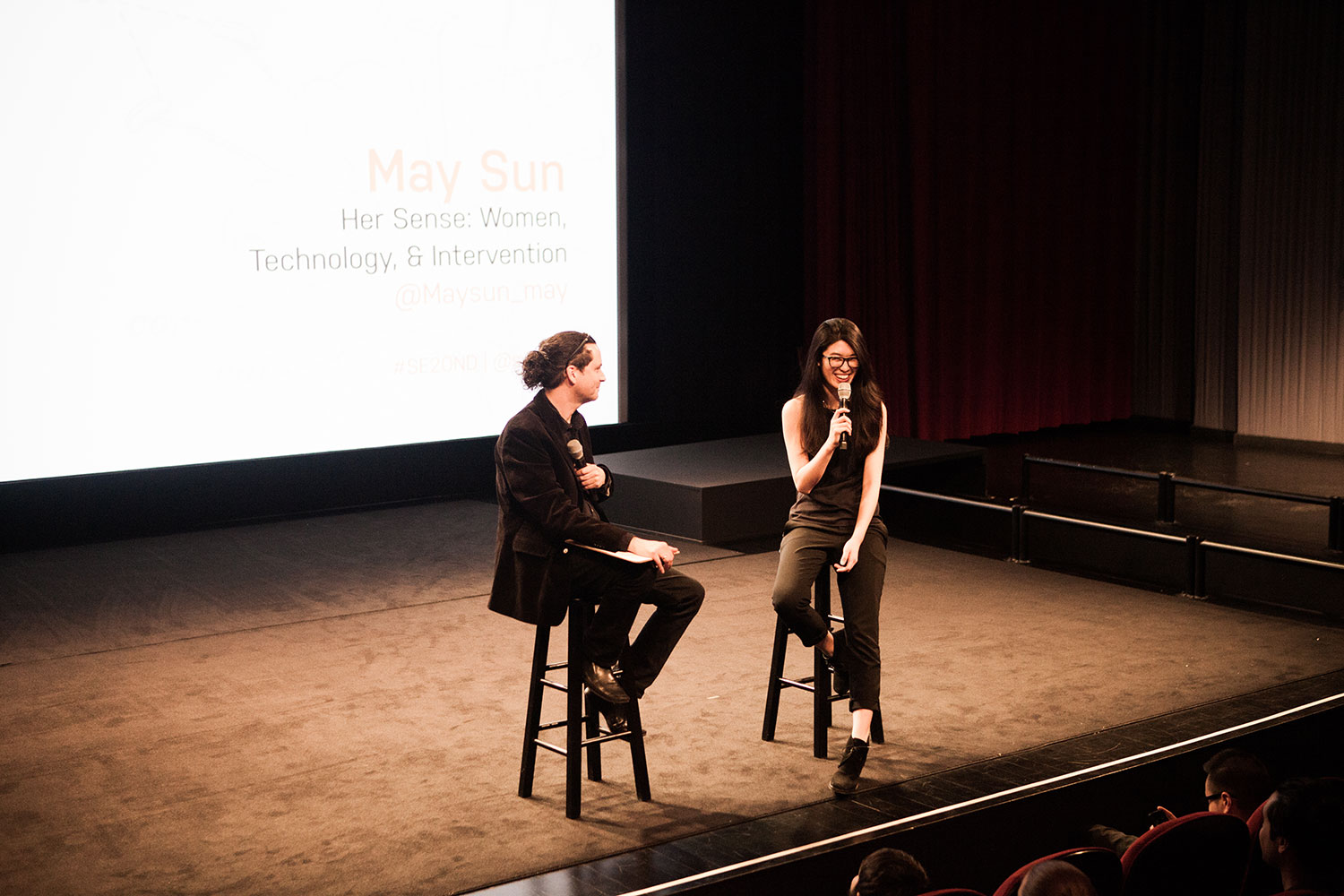MASTERS THESIS: Her Sense: Women, Technology and Intervention, by May Shuchang Sun
Products of Design MFA graduate May Shuchang Sun’s thesis, titled “Her Sense: Women, Technology and Intervention,” is aimed at helping women in the workplace by creating technology that builds confidence. The thesis work grew from her initial question: “How can we build and strengthen the relationship that women have with technology?”






“Technology is an exploding industry,” she reasons, “so why aren’t women interested in this field?” Research revealed, of course, that it is extraordinarily male-dominated.
Sun has always been passionate about technology. Even as a girl, she loved to take things apart and to build small machines. (Above is a previous work she created, “Make-Up Machine.”) Reflecting on her own experience, Sun realized that she doesn’t actually talk about technology with her girlfriends—other than her design-school classmates. “Technology is an exploding industry,” she reasons, “so why aren’t women interested in this field?” Research revealed, of course, that it is extraordinarily male-dominated.
In 2013, for example, women earned 62% of all associate’s degrees, but made up only 26% of the computing workforce. And in that workforce, women occupied only 9% of management positions. In her book Women, Gender, and Technology, Mary Frank Fox argues that “technology is socially shaped;” it’s supposed to be for everyone, yet it is mostly reflecting and sharing only one gender’s perspective. Indeed, this echoed Sheryl Sandberg’s argument that “Stereotypes are very reinforcing, because as human beings, we expect what is familiar. In tech, girls don’t code because girls don’t code.”
“Perhaps there are not more women in tech because there are not enough mentors for women in tech?”
After conducting months of secondary research, interviewing experts in the field, and contacting organizations that are exploring these issues (Women 2.0, for example, and Girls Who Code), May had a key insight: “Perhaps there are not more women in tech because there are not enough mentors for women in tech?”
May held a workshop to hear the voices of other young women, and to learn how they thought about women and technology. She called the workshop “Girl Talk” and constructed it as a “collage session.” Participants created visual images and stories addressing provocations like “Why would you want to (or not want to) work in a technology firm?” “What are you dreams about new technology?” “What would you want to see in the future?” And “How could you start your own technology firm?”
After a lively and wide-ranging discussion, Sun distilled three insights:
1. The male-dominated environment can appear threatening for women.
2. Women feel strongly that they would like to have opportunities to network with, and be respected by, important female players within their field.
3. Women would like to develop safe, professional connections with their female peers in order to share ideas and insights.
Sister
Since May is a “maker,” she wanted to see if she could explore these social dynamics by actually using technology. She began by asking, “What is fundamentally missing in technology?” and, inspired by the work of Dunne & Raby, became convinced her that humans, at base, could have relationships with objects that are much more meaningful, more experiential, and more personal. She jumped right in and designed Sister: an extremely personal cellphone device with a radical form factor: a sphere that you nestle in your hands. Only you can speak into it, and only you can see what’s inside of it.
The primary challenge for Sister was its interface. What would be appropriate? She was inspired by three experts in the field: Lev Manovich, computer scientist at City University of New York, believes that “the technology of the 21st century will be defined by the interface.” Toni Dove, designer and interactive filmmaker, shared one of her concerns with May: “The problem is how to make an interface reflective of people and society, such that it can be understood naturally and deeply.” And Nathan Shedroff, author of Make It So, Interaction Design Lessons From Science Fiction, writes that “‘good’ interfaces often serve as reminders of principles with which we are already familiar.”
May argued that “almost all screens have interfaces, but of course interfaces are not limited to the screen.” Created in 2010, the human-like robot, Geminoid F, has recently been assisting nurses in Japanese hospitals. The American sci-fi movie Her tells the fictional story of a man who falls in love with a female interface whose intelligent, warm, and caring demeanor approach what the protagonist would certainly characterize as love.
“I don’t feel secure being the only female on the team. Even though I have comparable technical skills, my boss still prefers to ask the male engineers.”
It was at this point that the research around interfaces and the research around women and technology crossed over. During an interview with electronic artist Hannah Mishin, she revealed to May one of the challenges she faced: “I don’t feel secure being the only female on the team. Even though I have comparable technical skills, my boss still prefers to ask the male engineers.” Sun wondered why her workplace wasn’t working for her. Or, putting it another way, perhaps she feels like she just doesn’t “own the room.”
Inspired by this notion, May set out to build two robotic interfaces: Puppi and LookBot.
Puppi
Puppi is a robotic interface that intermittently spreads a woman’s scent in a space—marking her territory—so that she feels like she owns the room. Users first fill puppy with their favorite perfume (or better, their pheromones if available), and then let it go! Check out the quick video of Puppi below:
In true maker-spirit, May constructed Puppi by hacking a couple of other products—a home air freshener atomizer, and an app-controlled robot.
LookBot is a smart robot that lives in a woman’s purse. It is constantly scanning its surroundings, looking for people’s faces.
Lookbot
In her book, See Yourself Sensing, architect and filmmaker Madeline Schwartzman writes, “Physical appearance is a potent tool for communicating identity, beliefs and values.” Near the end of May’s thesis work, Facebook had just released DeepFace, its online face-recognition technology. May began to imagine a near future where she could leverage this technology to deliberately serve women, and designed Lookbot.
LookBot is a smart robot that lives in a woman’s purse. It is constantly scanning its surroundings, looking for people’s faces.
Here’s how it works:
1. LookBot analyzes nearby people’s faces—whether the user is walking around the city, in the office, or at a social gathering.
2. LookBot compares what it sees with information from social media-networking sites such as LinkedIn and Facebook, matching online profiles with the faces that it sees.
3. When LookBot identifies a potential networking candidate (based on the user’s own social and work profile)—say an industry leader, mentor, role model, or business partner—it sends a notification to the user’s smartphone or smartwatch with the appropriate information, such as the person’s name, occupation, company, and specific location. It can even suggest a “meet up.”
Let’s take a closer look: In this example, a woman is sitting in a coffee shop, and LookBot recognizes Ayah Bdeir, the CEO of littleBits—a highly respected leader in technology and hardware. Her current interest is helping people in #Nepal. In this scenario, the user may decide to approach Ayah, introduce herself, and perhaps start a conversation.
Round Table
Finally, Sun developed an online networking platform called Round Table that fosters team-building and outlines frameworks for technological entrepreneurship.
The target audience for the platform is young female professionals, graduate and undergraduate students who want to build a start-up after leaving school, and young mothers, staying at home, but who also want to maintain their professional growth.
The first-time experience of the app let’s users choose their expertise, and then displays the teams that the user might be interested in, based on that expertise.
If users don’t want to join an existing team, they can choose to build a team. Here, they can create a topic or a theme—the business framework will be provided—and then invite people with different backgrounds to contribute to the team. May envisions Round Table as a platform that will create opportunities for its members to learn and gain experience from one another—to share, build, and support one another.
May believes in a great future for women and technology, and hopes that her thesis work will both support women, and inspire a new generation for a future in technology.
See more of May Shuchang Sun’s work at http://www.maysundesign.nyc, and contact her at ssun2[at]sva[dot]edu.


















